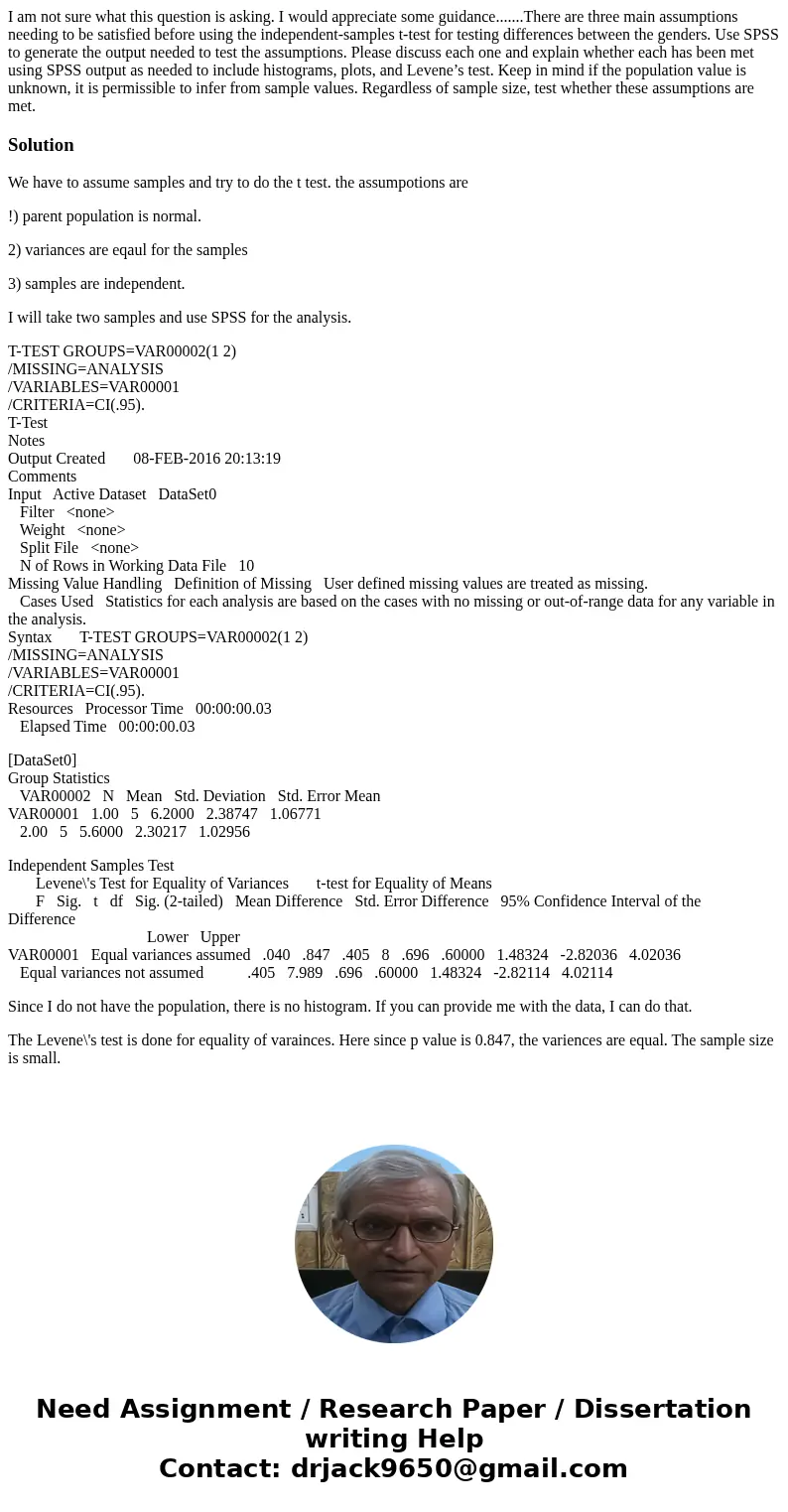I am not sure what this question is asking I would appreciat
I am not sure what this question is asking. I would appreciate some guidance.......There are three main assumptions needing to be satisfied before using the independent-samples t-test for testing differences between the genders. Use SPSS to generate the output needed to test the assumptions. Please discuss each one and explain whether each has been met using SPSS output as needed to include histograms, plots, and Levene’s test. Keep in mind if the population value is unknown, it is permissible to infer from sample values. Regardless of sample size, test whether these assumptions are met.
Solution
We have to assume samples and try to do the t test. the assumpotions are
!) parent population is normal.
2) variances are eqaul for the samples
3) samples are independent.
I will take two samples and use SPSS for the analysis.
T-TEST GROUPS=VAR00002(1 2)
/MISSING=ANALYSIS
/VARIABLES=VAR00001
/CRITERIA=CI(.95).
T-Test
Notes
Output Created 08-FEB-2016 20:13:19
Comments
Input Active Dataset DataSet0
Filter <none>
Weight <none>
Split File <none>
N of Rows in Working Data File 10
Missing Value Handling Definition of Missing User defined missing values are treated as missing.
Cases Used Statistics for each analysis are based on the cases with no missing or out-of-range data for any variable in the analysis.
Syntax T-TEST GROUPS=VAR00002(1 2)
/MISSING=ANALYSIS
/VARIABLES=VAR00001
/CRITERIA=CI(.95).
Resources Processor Time 00:00:00.03
Elapsed Time 00:00:00.03
[DataSet0]
Group Statistics
VAR00002 N Mean Std. Deviation Std. Error Mean
VAR00001 1.00 5 6.2000 2.38747 1.06771
2.00 5 5.6000 2.30217 1.02956
Independent Samples Test
Levene\'s Test for Equality of Variances t-test for Equality of Means
F Sig. t df Sig. (2-tailed) Mean Difference Std. Error Difference 95% Confidence Interval of the Difference
Lower Upper
VAR00001 Equal variances assumed .040 .847 .405 8 .696 .60000 1.48324 -2.82036 4.02036
Equal variances not assumed .405 7.989 .696 .60000 1.48324 -2.82114 4.02114
Since I do not have the population, there is no histogram. If you can provide me with the data, I can do that.
The Levene\'s test is done for equality of varainces. Here since p value is 0.847, the variences are equal. The sample size is small.

 Homework Sourse
Homework Sourse